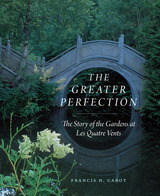46 have author last names that start with N have author last names that start with N
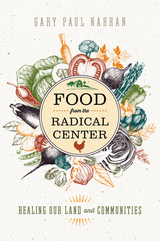
America has never felt more divided. But in the midst of all the acrimony comes one of the most promising movements in our country’s history. People of all races, faiths, and political persuasions are coming together to restore America's natural wealth: its ability to produce healthy foods.
In Food from the Radical Center, Gary Nabhan tells the stories of diverse communities who are getting their hands dirty and bringing back North America's unique fare: bison, sturgeon, camas lilies, ancient grains, turkeys, and more. These efforts have united people from the left and right, rural and urban, faith-based and science-based, in game-changing collaborations. Their successes are extraordinary by any measure, whether economic, ecological, or social. In fact, the restoration of land and rare species has provided—dollar for dollar—one of the best returns on investment of any conservation initiative.
As a leading thinker and seasoned practitioner in biocultural conservation, Nabhan offers a truly unique perspective on the movement. He draws on fifty years of work with community-based projects around the nation, from the desert Southwest to the low country of the Southeast. Yet Nabhan’s most enduring legacy may be his message of hope: a vision of a new environmentalism that is just and inclusive, allowing former adversaries to commune over delicious foods.
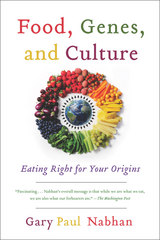
Vegan, low fat, low carb, slow carb: Every diet seems to promise a one-size-fits-all solution to health. But they ignore the diversity of human genes and how they interact with what we eat.
In Food, Genes, and Culture, renowned ethnobotanist Gary Nabhan shows why the perfect diet for one person could be disastrous for another. If your ancestors were herders in Northern Europe, milk might well provide you with important nutrients, whereas if you’re Native American, you have a higher likelihood of lactose intolerance. If your roots lie in the Greek islands, the acclaimed Mediterranean diet might save your heart; if not, all that olive oil could just give you stomach cramps.
Nabhan traces food traditions around the world, from Bali to Mexico, uncovering the links between ancestry and individual responses to food. The implications go well beyond personal taste. Today’s widespread mismatch between diet and genes is leading to serious health conditions, including a dramatic growth over the last 50 years in auto-immune and inflammatory diseases.
Readers will not only learn why diabetes is running rampant among indigenous peoples and heart disease has risen among those of northern European descent, but may find the path to their own perfect diet.
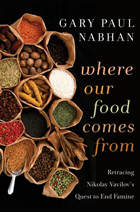
already been lost. But he also shows what resilient farmers and scientists in many regions are doing to save the remaining living riches of our world.
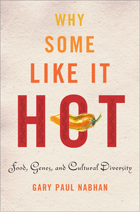
Do your ears burn whenever you eat hot chile peppers? Does your face immediately flush when you drink alcohol? Does your stomach groan if you are exposed to raw milk or green fava beans? If so, you are probably among the one-third of the world's human population that is sensitive to certain foods due to your genes' interactions with them.
Formerly misunderstood as "genetic disorders," many of these sensitivities are now considered to be adaptations that our ancestors evolved in response to the dietary choices and diseases they faced over millennia in particular landscapes. They are liabilities only when we are "out of place," on globalized diets depleted of certain chemicals that triggered adaptive responses in our ancestors.
In Why Some Like It Hot, an award-winning natural historian takes us on a culinary odyssey to solve the puzzles posed by "the ghosts of evolution" hidden within every culture and its traditional cuisine. As we travel with Nabhan from Java and Bali to Crete and Sardinia, to Hawaii and Mexico, we learn how various ethnic cuisines formerly protected their traditional consumers from both infectious and nutrition-related diseases. We also bear witness to the tragic consequences of the loss of traditional foods, from adult-onset diabetes running rampant among 100 million indigenous peoples to the historic rise in heart disease among individuals of northern European descent.
In this, the most insightful and far-reaching book of his career, Nabhan offers us a view of genes, diets, ethnicity, and place that will forever change the way we understand human health and cultural diversity. This book marks the dawning of evolutionary gastronomy in a way that may save and enrich millions of lives.
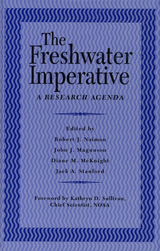
This volume summarizes the two-year effort of a working group of leading aquatic scientists sponsored by NSF, EPA, NASA, TVA, and NOAA to identify research opportunities and frontiers in freshwater sciences for this decade and beyond. The research agenda outlined focuses on issues of water availability, aquatic ecosystem integrity, and human health and safety. It is a consensus document that has been endorsed by all of the major professional organizations involved with freshwater issues.

Landscape ecology is a widely influential approach to looking at ecological function at the scale of landscapes, and accepting that human beings powerfully affect landscape pattern and function. It goes beyond investigation of pristine environments to consider ecological questions that are raised by patterns of farming, forestry, towns, and cities.
Placing Nature is a groundbreaking volume in the field of landscape ecology, the result of collaborative work among experts in ecology, philosophy, art, literature, geography, landscape architecture, and history. Contributors asked each other: What is our appropriate role in nature? How are assumptions of Western culture and ingrained traditions placed in a new context of ecological knowledge? In this book, they consider the goals and strategies needed to bring human-dominated landscapes into intentional relationships with nature, articulating widely varied approaches to the task.
In the essays: novelist Jane Smiley, ecologist Eville Gorham, and historian Curt Meine each examine the urgent realities of fitting together ecological function and culture philosopher Marcia Eaton and landscape architect Joan Nassauer each suggest ways to use the culture of nature to bring ecological health into settled landscapes urban geographer Judith Martin and urban historian Sam Bass Warner, geographer and landscape architect Deborah Karasov, and ecologist William Romme each explore the dynamics of land development decisions for their landscape ecological effects artist Chris Faust's photographs juxtapose the crass and mundane details of land use with the poetic power of ecological pattern.
Every possible future landscape is the embodiment of some human choice. Placing Nature provides important insight for those who make such choices -- ecologists, ecosystem managers, watershed managers, conservation biologists, land developers, designers, planners -- and for all who wish to promote the ecological health of their communities.
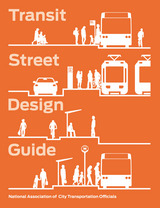
The Transit Street Design Guide is a well-illustrated, detailed introduction to designing streets for high-quality transit, from local buses to BRT, from streetcars to light rail. Drawing on the expertise of a peer network and case studies from across North America, the guide provides a much-needed link between transit planning, transportation engineering, and street design. The Transit Street Design Guide presents a new set of core principles, street typologies, and design strategies that shift the paradigm for streets, from merely accommodating service to actively prioritizing great transit. The book expands on the transit information in the acclaimed Urban Street Design Guide, with sections on comprehensive transit street design, lane design and materials, stations and stops, intersection strategies, and city transit networks. It also details performance measures and outlines how to make the case for great transit street design in cities.
The guide is built on simple math: allocating scarce space to transit instead of private automobiles greatly expands the number of people a street can move. Street design and decisions made by cities, from how to time signals to where bus stops are placed, can dramatically change how transit works and how people use it.
The Transit Street Design Guide is a vital resource for every transportation planner, transit operations planner, and city traffic engineer working on making streets that move more people more efficiently and affordably.
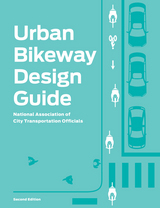
To create the Guide, the authors conducted an extensive worldwide literature search from design guidelines and real-life experience. They worked closely with a panel of urban bikeway planning professionals from NACTO member cities and from numerous other cities worldwide, as well as traffic engineers, planners, and academics with deep experience in urban bikeway applications. The Guide offers substantive guidance for cities seeking to improve bicycle transportation in places where competing demands for the use of the right-of-way present unique challenges.
First and foremost, the NACTO Urban Bikeway Design Guide, Second Edition will help practitioners make good decisions about urban bikeway design. The treatments outlined in this updated Guide are based on real-life experience in the world's most bicycle friendly cities and have been selected because of their utility in helping cities meet their goals related to bicycle transportation. Praised by Former Transportation Secretary Ray LaHood as an “extraordinary piece of work,” the Guide is an indispensable tool every planner must have for their daily transportation design work.

The completely revised and updated third edition of the NACTO Urban Bikeway Design Guide sets a new standard for street design in North America. Developed for cities, by cities, the new guide is more than a permission slip for better street design--it's a prescription for safe, connected, equitable bike networks. It captures lessons learned and emerging practices to set a new bar for the design of city streets.
The NACTO Urban Bikeway Design Guide, Third Edition, will help city leaders and street designers meet the needs of our time. New topics address critical gaps in existing guidance for planning and project development. Contextual guidance for bikeway design encompasses the needs of a wider swath of potential riders, across genders, ages, races, ethnicities, incomes, and abilities. The guide offers substantive guidance for safe intersection design, with a focus on conflict reduction. It is a blueprint for implementing safe, connected, and equitable bike networks. Every transportation professional, from design to maintenance and from field staff to executives, needs a copy for their daily work.
Praise for the second edition
“NACTO's Urban Bikeway Design Guide gives American planners and designers the tools they need to make cycling accessible to more people.”
—Janette Sadik-Khan, former New York City Transportation Commissioner
“This is an extraordinary piece of work that's long overdue.”
—Ray LaHood, former United States Secretary of Transportation
“The guide will serve as an essential blueprint for safe, active, multi-modal streets.”
—Gabe Klein, former Chicago Transportation Commissioner
“A Must-read… Landscape architects, planners, and city officials should find this guide invaluable. Anyone who advocates for increasing bicycle infrastructure in our cities will find many useful tools for implementing best practice infrastructure.”
―ASLA's The Dirt
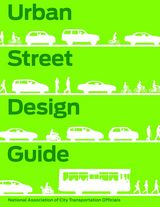
The well-illustrated guide offers blueprints of street design from multiple perspectives, from the bird’s eye view to granular details. Case studies from around the country clearly show how to implement best practices, as well as provide guidance for customizing design applications to a city’s unique needs. Urban Street Design Guide outlines five goals and tenets of world-class street design:
• Streets are public spaces. Streets play a much larger role in the public life of cities and communities than just thoroughfares for traffic.
• Great streets are great for business. Well-designed streets generate higher revenues for businesses and higher values for homeowners.
• Design for safety. Traffic engineers can and should design streets where people walking, parking, shopping, bicycling, working, and driving can cross paths safely.
• Streets can be changed. Transportation engineers can work flexibly within the building envelope of a street. Many city streets were created in a different era and need to be reconfigured to meet new needs.
• Act now! Implement projects quickly using temporary materials to help inform public decision making.
Elaborating on these fundamental principles, the guide offers substantive direction for cities seeking to improve street design to create more inclusive, multi-modal urban environments. It is an exceptional resource for redesigning streets to serve the needs of 21st century cities, whose residents and visitors demand a variety of transportation options, safer streets, and vibrant community life.
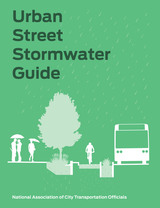
The Urban Street Stormwater Guide begins from the principle that street design can support—or degrade—the urban area’s overall environmental health. By incorporating Green Stormwater Infrastructure (GSI) into the right-of-way, cities can manage stormwater and reap the public health, environmental, and aesthetic benefits of street trees, planters, and greenery in the public realm. With thoughtful design, GSI can bolster strategies to provide a safe and pleasant walking and biking experience, efficient and reliable transit service, and safer streets for all users.
Building on the successful NACTO urban street guides, the Urban Street Stormwater Guide provides the best practices for the design of GSI along transportation corridors. The authors consider context-sensitive design elements related to street design, character and use, zoning, posted speed, traffic volumes, and impacts to non-motorized and vehicular access. The Guide documents and synthesizes current practices being developed by individual agencies and recommends design guidance for implementation, as well as explores innovative new strategies being tested in cities nationwide. The guidance will focus on providing safe, functioning and maintainable infrastructure that meets the unique needs and requirements of the transportation corridors and its various uses and users.
The state-of-the-art solutions in this guide will assist urban planners and designers, transportation engineers, city officials, ecologists, public works officials, and others interested in the role of the built urban landscape in protecting the climate, water quality, and natural environment.

Climate Solutions Consensus presents an agenda for America. It is the first major consensus statement by the nation’s leading scientists, and it provides specific recommendations for federal policies, for state and local governments, for businesses, and for colleges and universities that are preparing future generations who will be dealing with a radically changed climate. The book draws upon the recommendations developed by more than 1200 scientists, educators and decision makers who participated in the National Council for Science and the Environment’s 8th National Conference on Science, Policy and the Environment.
After presenting a lucid narrative of the science behind climate change and its solutions, Climate Solutions Consensus presents 35 practical, results-oriented approaches for minimizing climate change and its impacts. It clearly spells out options for technological, societal, and policy actions. And it deals head-on with controversial topics, including nuclear energy, ocean fertilization and atmospheric geo-engineering.
One of the book’s key conclusions is that climate solutions are about much more than energy sources. They involve re-examining everything people do with an eye toward minimizing climate impacts. This includes our eating habits, consumption patterns, transportation, building and housing, forestry, land use, education, and more. According to these scientists, the time to act is now. With clarity and urgency, they tell us exactly what needs to be done to start reversing the driving factors behind climate change, minimizing their consequences, and adapting to what is beyond our power to stop.
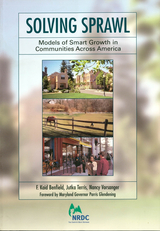
The book details 35 diverse smart-growth stories from around the United States and celebrates those who are leading the way in solving sprawl –state and local officials who have embraced new forms of development, corporations who are choosing to redevelop abandoned city properties rather than build new corporate campuses on undeveloped land, faith-based organizations that have been instrumental in redeveloping inner-city neighborhoods, visionary architects and planners who are showing how to design communities and regions that solve sprawl. Each chapter showcases a wide variety of solutions with projects of all sizes in urban, suburban, and exurban settings including Adidas Village in Portland, Oregon; the MCI Center in Washington, D.C.; Quality Hill in Kansas City, Kansas; Suisun City redevelopment in Suisun City, California; growth control initiatives in Boulder, Colorado; Pearl Lake in Almira Township, Michigan; and more.
Interspersed throughout are sidebars that offer additional examples and reminders of the sprawl-related environmental and social problems that smart growth helps overcome. The book also includes a glossary of planning terms and land-use concepts.
Instead of obliterating our countryside while jeopardizing our financial reserves and weakening our social bonds, we are learning how to develop and grow in ways that better reflect our values. Solving Sprawl brings a renewed sense of hope and inspiration about smart growth and its potential for creating a more livable country.
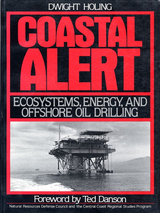
Coastal Alert explains how citizens can protect coastal resources from the damaging effects of offshore oil drilling.
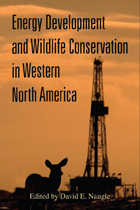
Energy Development and Wildlife Conservation in Western North America offers a road map for securing our energy future while safeguarding our heritage.
Contributors show how science can help craft solutions to conflicts between wildlife and energy development by delineating core areas, identifying landscapes that support viable populations, and forecasting future development scenarios to aid in conservation design. The book
- frames the issue and introduces readers to major types of extraction
- quantifies the pace and extent of current and future energy development
- provides an ecological foundation for understanding cumulative impacts on wildlife species
- synthesizes information on the biological response of wildlife to development
- discusses energy infrastructure as a conduit for the spread of invasive species
- compares impacts of alternative energy to those of conventional development
The final section calls for a shift away from site-level management that has failed to mitigate cumulative impacts on wildlife populations toward broad-scale planning and implementation of conservation in priority landscapes. The book concludes by identifying ways that decision makers can remove roadblocks to conservation, and provides a blueprint for implementing conservation plans. Energy Development and Wildlife Conservation in Western North America is a must-have volume for elected officials, industry representatives, natural resource managers, conservation groups, and the public seeking to promote energy independence while at the same time protecting wildlife.
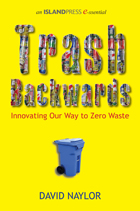
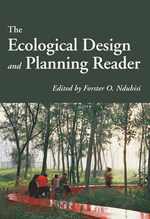
A rich body of literature on the effect of human actions on the natural environment provides a window into what we now refer to as ecological design and planning. The study and practice of ecological design and planning provide a promising way to manage change in the landscape so that human actions are more in tune with natural processes. In The Ecological Design and Planning Reader Professor Ndubisi offers refreshing insights into key themes that shape the theory and practice of ecological design and planning. He has assembled, synthesized, and framed selected seminal published scholarly works in the field from the past one hundred and fifty years——ranging from Ebenezer Howard’s Garden Cities of To-morrow to Anne Whiston Spirn’s, “Ecological Urbanism: A Framework for the Design of Resilient Cities.” The reader ends with a hopeful look forward, which suggests an agenda for future research and analysis in ecological design and planning.
This is the first volume to bring together classic and contemporary writings on the history, evolution, theory, methods, and exemplary practice of ecological design and planning. The collection provides students, scholars, researchers, and practitioners with a solid foundation for understanding the relationship between human systems and our natural environment.
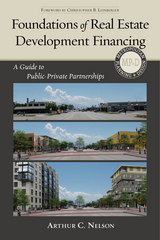
This is the first primer on financing urban redevelopment written for practicing planners and public administrators. In easy-to-understand language, it will inform readers of the natural cycle of urban development, explain how to overcome barriers to efficient redevelopment, what it takes for the private sector to justify its redevelopment investments, and the role of public and nonprofit sectors to leverage private sector redevelopment where the market does not generate sufficient rates of return.
This is a must read for practicing planners and planning students, economic development officials, public administrators, and others who need to understand how to leverage public and non-profit resources to leverage private funds for redevelopment.
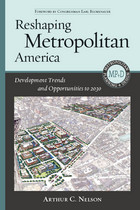
Nearly half the buildings that will be standing in 2030 do not exist today. That means we have a tremendous opportunity to reinvent our urban areas, making them more sustainable and livable for future generations. But for this vision to become reality, the planning community needs reliable data about emerging trends and smart projections about how they will play out. Arthur C. Nelson delivers that resource in Reshaping Metropolitan America.
This unprecedented reference provides statistics about changes in population, jobs, housing, nonresidential space, and other key factors that are shaping the built environment, but its value goes beyond facts and figures. Nelson expertly analyzes contemporary development trends and identifies shifts that will affect metropolitan areas in the coming years. He shows how redevelopment can meet new and emerging market demands by creating more compact, walkable, and enjoyable communities. Most importantly, Nelson outlines a policy agenda for reshaping America that meets the new market demand for sustainable places.

Impact fees are one-time charges that are applied to new residential developments by local governments that are seeking funds to pay for the construction or expansion of public facilities, such as water and sewer systems, schools, libraries, and parks and recreation facilities. In the face of taxpayer revolts against increases in property taxes, impact fees are used increasingly by local governments throughout the U.S. to finance construction or improvement of their infrastructure. Recent estimates suggest that 60 percent of all American cities with over 25,000 residents use some form of impact fees. In California, it is estimated that 90 percent of such cities impose impact fees.
For more than thirty years, impact fees have been calculated based on proportionate share of the cost of the infrastructure improvements that are to be funded by the fees. However, neither laws nor courts have ensured that fees charged to new homes are themselves proportionate. For example, the impact fee may be the same for every home in a new development, even when homes vary widely in size and selling price. Data show, however, that smaller and less costly homes have fewer people living in them and thus less impact on facilities than larger homes. This use of a flat impact fee for all residential units disproportionately affects lower-income residents.
The purpose of this guidebook is to help practitioners design impact fees that are equitable. It demonstrates exactly how a fair impact fee program can be designed and implemented. In addition, it includes information on the history of impact fees, discusses alternatives to impact fees, and summarizes state legislation that can infl uence the design of local fee programs. Case studies provide useful illustrations of successful programs.
This book should be the first place that planning professionals, public officials, land use lawyers, developers, homebuilders, and citizen activists turn for help in crafting (or recrafting) proportionate-share impact fee programs.
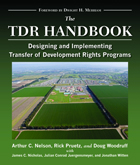
Although TDR programs must conform to zoning laws, they provide market incentives that make them more equitable (and often more lucrative) for sellers and frequently benefit buyers by allowing them to receive prior approval for their high-density development plans. Since the 1970s when modern TDR applications were first conceived, more than 200 communities in 33 states across the U.S. have implemented TDR-based programs. The most common uses of TDR to date involve protecting farmland, environmentally sensitive land, historic sites, and "rural character," and urban revitalization.
Until now, however, there has never been a clearly written, one-volume book on the subject. At last, The TDR Handbook provides a comprehensive guide to every aspect of TDR programs, from the thinking behind them to the nuts and bolts of implementation-including statutory guidance, model ordinances, suggestions for program administration, and comparisons with other types of preservation programs. In addition, six of its twenty chapters are devoted to case studies of all major uses to which TDR programs have been utilized to date, including recent urban revitalization projects that utilize TDR principles.
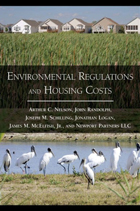
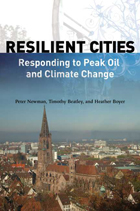
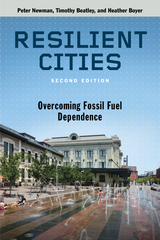
Peter Newman, Timothy Beatley, and Heather Boyer respond to these questions in the revised and updated edition of Resilient Cities. Since the first edition was published in 2009, interest in resilience has surged, in part due to increasingly frequent and deadly natural disasters, and in part due to the contribution of our cities to climate change. The number of new initiatives and approaches from citizens and all levels of government show the promise as well as the challenges of creating cities that are truly resilient.
The authors’ hopeful approach to creating cities that are not only resilient, but striving to become regenerative, is now organized around their characteristics of a resilient city. A resilient city is one that uses renewable and distributed energy; has an efficient and regenerative metabolism; offers inclusive and healthy places; fosters biophilic and naturally adaptive systems; is invested in disaster preparedness; and is designed around efficient urban fabrics that allow for sustainable mobility.
Resilient Cities, Second Edition reveals how the resilient city characteristics have been achieved in communities around the globe. The authors offer stories, insights, and inspiration for urban planners, policymakers, and professionals interested in creating more sustainable, equitable, and, eventually, regenerative cities. Most importantly, the book is about overcoming fear and generating hope in our cities. Cities will need to claim a different future that helps us regenerate the whole planet–this is the challenge of resilient cities.
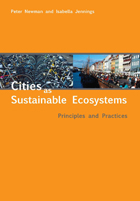
Cities as Sustainable Ecosystems shows how cities and their residents can begin to reintegrate into their bioregional environment, and how cities themselves can be planned with nature’s organizing principles in mind. Taking cues from living systems for sustainability strategies, Newman and Jennings reassess urban design by exploring flows of energy, materials, and information, along with the interactions between human and non-human parts of the system.
Drawing on examples from all corners of the world, the authors explore natural patterns and processes that cities can emulate in order to move toward sustainability. Some cities have adopted simple strategies such as harvesting rainwater, greening roofs, and producing renewable energy. Others have created biodiversity parks for endangered species, community gardens that support a connection to their foodshed, and pedestrian-friendly spaces that encourage walking and cycling.
A powerful model for urban redevelopment, Cities as Sustainable Ecosystems describes aspects of urban ecosystems from the visioning process to achieving economic security to fostering a sense of place.
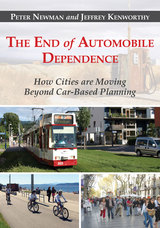
We are thus in a new era that has come much faster than global transportation experts Peter Newman and Jeffrey Kenworthy had predicted: the end of automobile dependence. In The End of Automobile Dependence, Newman and Kenworthy look at how we can accelerate a planning approach to designing urban environments that can function reliably and conveniently on alternative modes, with a refined and more civilized automobile playing a very much reduced and manageable role in urban transportation. The authors examine the rise and fall of automobile dependence using updated data on 44 global cities to better understand how to facilitate and guide cities to the most productive and sustainable outcomes.
This is the final volume in a trilogy by Newman and Kenworthy on automobile dependence (Cities and Automobile Dependence in 1989 and Sustainability and Cities: Overcoming Automobile Dependence in 1999). Like all good trilogies this one shows the rise of an empire, in this case that of the automobile, the peak of its power, and the decline of that empire.
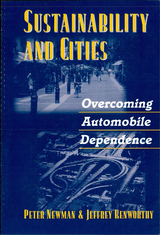
The book begins with chapters that set forth the notion of sustainability and how it applies to cities and automobile dependence. The authors consider the changing urban economy in the information age, and describe the extent of automobile dependence worldwide. They provide an updated survey of global cities that examines a range of sustainability factors and indicators, and, using a series of case studies, demonstrate how cities around the world are overcoming the problem of automobile dependence. They also examine the connections among transportation and other issues—including water use and cycling, waste management, and greening the urban landscape—and explain how all elements of sustainability can be managed simultaneously.
The authors end with a consideration of how professional planners can promote the sustainability agenda, and the ethical base needed to ensure that this critical set of issues is taken seriously in the world's cities.
Sustainability and Cities will serve as a source of both learning and inspiration for those seeking to create more sustainable cities, and is an important book for practitioners, researchers, and students in the fields of planning, geography, and public policy.
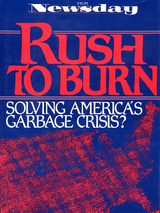
One day in March 1987, a barge from Islip, Long Island was evicted from Morehead City, North Carolina, after trying to unload the mountains of trash on its decks. More than five months from the time it began its trip, the unwelcome barge, and it's 3,186 tons of commercial garbage, became the cornerstone of an astonishing news investigation that revealed a country unable to cope with its mounting garbage crisis.
Newsday reporters were the first to locate the barge, the Mobro 4000 as it drifted aimlessly off the shore of Long Island. They were also first to explore and explain the problems and issues that barge had come to symbolize. The results of their investigation are presented in this book. Winner of the Worth Bingham Award, the Page One Award for Crusading Journalism, and the New York State Associated Press Award for In-Depth Reporting, Rush to Burn explains the reasons why we, as a throw-away society, are suffocating in our own trash. It also explains why communities, in desperation, are turning to incineration, the riskiest form of garbage disposal yet developed.
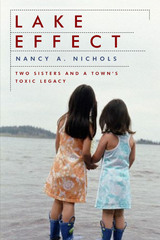
Lake Effect is the story of her investigation. It reaches back to their childhood in Waukegan, Illinois, an industrial town on Lake Michigan once known for good factory jobs and great fishing. Now Waukegan is famous for its Superfund sites: as one resident put it, asbestos to the north, PCBs to the south.
Drawing on her experience as a journalist, Nichols interviewed dozens of scientists, doctors, and environmentalists to determine if these pollutants could have played a role in her sister’s death. While researching Sue’s cancer, she discovered her own: a vicious though treatable form of pancreatic cancer. Doctors and even family urged her to forget causes and concentrate on cures, but Nichols knew that it was relentless questioning that had led to her diagnosis. And that it is questioning—by government as well as individuals—that could save other lives.
Lake Effect challenges us to ask why. It is the fulfillment of a sister’s promise. And it is a call to stop the pollution that is endangering the health of all our families.
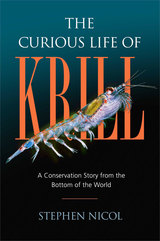
Krill—it’s a familiar word that conjures oceans, whales, and swimming crustaceans. Scientists say they are one of most abundant animals on the planet. But when pressed, few people can accurately describe krill or explain their ecological importance. Antarctic krill have used their extraordinary adaptive skills to survive and thrive for millions of years in a dark, icy world far from human interference. But with climate change melting ice caps at the top and bottom of the world, and increased human activity and pollution, their evolutionary flexibility to withstand these new pressures may not be enough.
Eminent krill scientist Stephen Nicol wants us to know more about this enigmatic creature of the sea. He argues that it’s critical to understand krill’s complex biology in order to protect them as the krill fishing industry expands. This account of Antarctic krill-one of the largest of eighty-five krill species-takes us to the Southern Ocean to learn firsthand the difficulties and rewards of studying krill in its habitat. Nicol lays to rest the notion that krill are simply microscopic, shrimplike whale food but are in fact midway up the food chain, consumers of phytoplankton and themselves consumed by whales, seals, and penguins. From his early education about the sex lives of krill in the Bay of Fundy to a krill tattoo gone awry, Nicol uses humor and personal stories to bring the biology and beauty of krill alive. In the final chapters, he examines the possibility of an increasingly ice-free Southern Ocean and what that means for the fate of krill-and us.
Ocean enthusiasts will come away with a newfound appreciation for the complex ecology of a species we have much to learn from, and many reasons to protect.
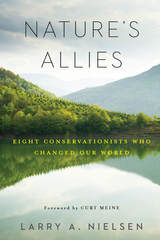
In eight engaging and diverse biographies—John Muir, Ding Darling, Aldo Leopold, Rachel Carson, Chico Mendes, Billy Frank Jr., Wangari Maathai, and Gro Harlem Brundtland—we meet individuals who have little in common except that they all made a lasting mark on our world. Some famous and some little known to readers, they spoke out to protect wilderness, wildlife, fisheries, rainforests, and wetlands. They fought for social justice and exposed polluting practices. They marched, wrote books, testified before Congress, performed acts of civil disobedience, and, in one case, were martyred for their defense of nature. Nature’s Allies pays tribute to them all as it rallies a new generation of conservationists to follow in their footsteps.
These vivid biographies are essential reading for anyone who wants to fight for the environment against today’s political opposition. Nature’s Allies will inspire students, conservationists, and nature lovers to speak up for nature and show the power of one person to make a difference.

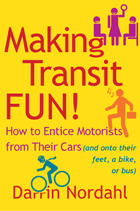
In Making Transit Fun!, Nordahl shows that with the help of architects, urban designers, graphic artists, industrial engineers, marketing experts-and even fashion designers-we can lure people out of their automobiles and toward healthier, more sustainable methods of transportation.
This accessible E-ssential focuses on the possibilities for making public transit, cycling, and walking more appealing to the motorist. In each section, Nordahl demonstrates how the transit stigma can be overcome with innovative design. From the aesthetics of buses to segregated bike lanes and pedestrian-priority streets, Nordahl showcases examples from around the world that excite the heart and bring an easy smile.

In My Kind of Transit, Darrin Nordahl argues that like life itself, transportation isn't only about the destination, but the journey. Public transit reduces traffic and pollution, yet few of us are willing to get out of our cars and onto subways and buses. But Nordahl demonstrates that when using public transit is an enjoyable experience, tourists and commuters alike willingly hand in their keys.
The trick is creating a system that isn't simply a poor imitation of the automobile, but offers its own pleasures and comforts. While a railway or bus will never achieve the quiet solitude of a personal car, it can provide, much like a well-designed public park, an inviting, communal space.
My Kind of Transit is an animated tour of successful transportation systems, offering smart, commonsense analysis of what makes transit fun. Nordahl draws on examples like the iconic street cars of New Orleans and the picturesque cable cars in San Francisco, illustrating that the best transit systems are uniquely tailored to their individual cities. He also describes universal principles of good transit design.
Nordahl's humanistic treatment will help planners, designers, transportation professionals, and policymakers create transit systems the public actually wants to ride. And it will introduce all readers to delightful ways of getting from point A to point B.
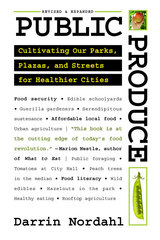
The idea that public land could be used creatively to grow fresh food for local citizens was beginning to gain traction when Public Produce was first published in 2009, but there were few concrete examples of action. Today, things are different: fruits and vegetables are thriving in parks, plazas, along our streets, and around our civic buildings.
This revised edition of Public Produce profiles the many communities and community officials that are rethinking the role of public space in cities, and shows how places as diverse as parking lots and playgrounds can sustain health and happiness through fresh produce. But these efforts produce more than food. Revitalizing urban areas, connecting residents with their neighborhoods, and promoting healthier lifestyles are just a few of the community goods we harvest from growing fruits and vegetables in our public gathering spots.
Taking readers from inspiration to implementation, Public Produce is chock full of tantalizing images and hearty lessons for bringing agriculture back into our cities.
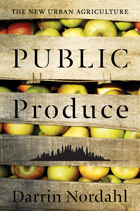
Public agencies at one time were at best indifferent about, or at worst dismissive of, food production in the city. Today, public officials recognize that food insecurity is affecting everyone, not just the inner-city poor, and that policies seeking to restructure the production and distribution of food to the tens of millions of people living in cities have immediate benefits to community-wide health and prosperity.
This book profiles urban food growing efforts, illustrating that there is both a need and a desire to supplement our existing food production methods outside the city with opportunities inside the city. Each of these efforts works in concert to make fresh produce more available to the public. But each does more too: reinforcing a sense of place and building community; nourishing the needy and providing economic assistance to entrepreneurs; promoting food literacy and good health; and allowing for “serendipitous sustenance.” There is much to be gained, Nordahl writes, in adding a bit of agrarianism into our urbanism.
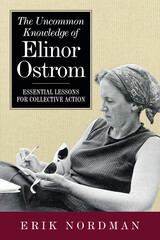
In The Uncommon Knowledge of Elinor Ostrom, author Erik Nordman brings to life Ostrom’s brilliant mind. Half a century ago, she was rejected from doctoral programs because she was a woman; in 2009, she became the first woman to win the Nobel Prize in Economics. Her research challenged the long-held dogma championed by Garrett Hardin in his famous 1968 essay, “The Tragedy of the Commons,” which argued that only market forces or government regulation can prevent the degradation of common pool resources. The concept of the “Tragedy of the Commons” was built on scarcity and the assumption that individuals only act out of self-interest. Ostrom’s research proved that people can and do act in collective interest, coming from a place of shared abundance. Ostrom’s ideas about common resources have played out around the world, from Maine lobster fisheries, to ancient waterways in Spain, to taxicabs in Nairobi. In writing The Uncommon Knowledge of Elinor Ostrom, Nordman traveled extensively to interview community leaders and stakeholders who have spearheaded innovative resource-sharing systems, some new, some centuries old. Through expressing Ostrom’s ideas and research, he also reveals the remarkable story of her life.
Ostrom broke barriers at a time when women were regularly excluded from academia and her research challenged conventional thinking. Elinor Ostrom proved that regular people can come together to act sustainably—if we let them. This message of shared collective action is more relevant than ever for solving today’s most pressing environmental problems.
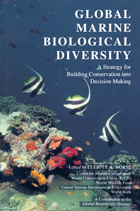
Global Marine Biological Diversity presents the most up-to-date information and view on the challenge of conserving the living sea and how that challenge can be met.
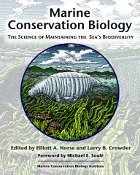
Humans are terrestrial animals, and our capacity to see and understand the importance and vulnerability of life in the sea has trailed our growing ability to harm it. While conservation biologists are working to address environmental problems humans have created on land, loss of marine biodiversity, including extinctions and habitat degradation, has received much less attention. At the same time, marine sciences such as oceanography and fisheries biology have largely ignored issues of conservation.
Marine Conservation Biology brings together for the first time in a single volume, leading experts from around the world to apply the lessons and thinking of conservation biology to marine issues. Contributors including James M. Acheson, Louis W. Botsford, James T. Carlton, Kristina Gjerde, Selina S. Heppell, Ransom A. Myers, Julia K. Parrish, Stephen R. Palumbi, and Daniel Pauly offer penetrating insights on the nature of marine biodiversity, what threatens it, and what humans can and must do to recover the biological integrity of the world's estuaries, coastal seas, and oceans.
Sections examine: distinctive aspects of marine populations and ecosystems; threats to marine biological diversity, singly and in combination; place-based management of marine ecosystems; the often-neglected human dimensions of marine conservation.
Marine Conservation Biology breaks new ground by creating the conceptual framework for the new field of marine conservation biology -- the science of protecting, recovering, and sustainably using the living sea. It synthesizes the latest knowledge and ideas from leading thinkers in disciplines ranging from larval biology to sociology, making it a must-read for research and teaching faculty, postdoctoral fellows, and graduate and advanced undergraduate students (who share an interest in bringing conservation biology to marine issues). Likewise, its lucid scientific examinations illuminate key issues facing environmental managers, policymakers, advocates, and funders concerned with the health of our oceans.
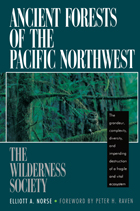
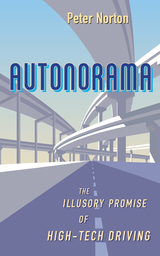
In Autonorama: The Illusory Promise of High-Tech Driving, technology historian Peter Norton argues that driverless cars cannot be the safe, sustainable, and inclusive “mobility solutions” that tech companies and automakers are promising us. The salesmanship behind the driverless future is distracting us from investing in better ways to get around that we can implement now. Unlike autonomous vehicles, these alternatives are inexpensive, safe, sustainable, and inclusive.
Norton takes the reader on an engaging ride —from the GM Futurama exhibit to “smart” highways and vehicles—to show how we are once again being sold car dependency in the guise of mobility. He argues that we cannot see what tech companies are selling us except in the light of history. With driverless cars, we’re promised that new technology will solve the problems that car dependency gave us—zero crashes! zero emissions! zero congestion! But these are the same promises that have kept us on a treadmill of car dependency for 80 years.
Autonorama is hopeful, advocating for wise, proven, humane mobility that we can invest in now, without waiting for technology that is forever just out of reach. Before intelligent systems, data, and technology can serve us, Norton suggests, we need wisdom. Rachel Carson warned us that when we seek technological solutions instead of ecological balance, we can make our problems worse. With this wisdom, Norton contends, we can meet our mobility needs with what we have right now.
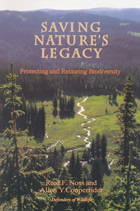
Written by two leading conservation biologists, Saving Nature's Legacy is a thorough and readable introduction to issues of land management and conservation biology. It presents a broad, land-based approach to biodiversity conservation in the United States, with the authors succinctly translating principles, techniques, and findings of the ecological sciences into an accessible and practical plan for action.
After laying the groundwork for biodiversity conservation -- what biodiversity is, why it is important, its status in North America -- Noss and Cooperrider consider the strengths and limitations of past and current approaches to land management. They then present the framework for a bold new strategy, with explicit guidelines on:
- inventorying biodiversity
- selecting areas for protection
- designing regional and continental reserve networks
- establishing monitoring programs
- setting priorities for getting the job done
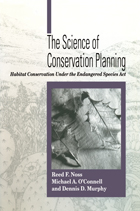
Broad-scale conservation of habitats is increasingly being recognized as a more effective means of protecting species and landscapes than single-species preservation efforts. While interest in the approach has grown tremendously in recent years, it remains controversial and the science behind it has yet to be fully developed.
In The Science of Conservation Planning, three of the nation's leading conservation biologists explore the role of the scientist in the planning process and present a framework and guidelines for applying science to regional habitat-based conservation planning. Chapters consider: history and background of conservation planning efforts criticisms of science in conservation planning principles of conservation biology that apply to conservation planning detailed examination of conservation plans specific recommendations for all parties involved.
The recommendations, interpretations, and questions provided are thoroughly based in the science of conservation biology, and the framework presented is adaptable to allow for revision and improvement as knowledge is gained and theories refined. The Science of Conservation Planning will serve as a model for the application of conservation biology to real-life problems, and can lead to the development of scientifically and politically sound plans that are likely to achieve their conservation goals, even in cases where biological and ecological information is limited.
The book is essential for scientists at all levels, including agency biologists, academic scientists, environmental consultants, and scientists employed by industry and conservation groups. It is also a valuable resource for elected officials and their staffs, environmentalists, developers, students, and citizen activists involved with the complex and contentious arena of conservation planning.
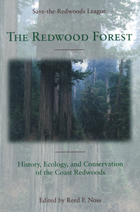
Evidence is mounting that redwood forests, like many other ecosystems, cannot survive as small, isolated fragments in human-altered landscapes. Such fragments lose their diversity over time and, in the case of redwoods, may even lose the ability to grow new, giant trees.
The Redwood Forest, written in support of Save-the-Redwood League's master plan, provides scientific guidance for saving the redwood forest by bringing together in a single volume the latest insights from conservation biology along with new information from data-gathering techniques such as GIS and remote sensing. It presents the most current findings on the geologic and cultural history, natural history, ecology, management, and conservation of the flora and fauna of the redwood ecosystem. Leading experts -- including Todd Dawson, Bill Libby, John Sawyer, Steve Sillett, Dale Thornburgh, Hartwell Welch, and many others -- offer a comprehensive account of the redwoods ecosystem, with specific chapters examining:
- the history of the redwood lineage, from the Triassic Period to the present, along with the recent history of redwoods conservation
- life history, architecture, genetics, environmental relations, and disturbance regimes of redwoods
- terrestrial flora and fauna, communities, and ecosystems
- aquatic ecosystems
- landscape-scale conservation planning
- management alternatives relating to forestry, restoration, and recreation.
The Redwood Forest offers a case study for ecosystem-level conservation and gives conservation organizations the information, technical tools, and broad perspective they need to evaluate redwood sites and landscapes for conservation. It contains the latest information from ground-breaking research on such topics as redwood canopy communities, the role of fog in sustaining redwood forests, and the function of redwood burls. It also presents sobering lessons from current research on the effects of forestry activities on the sensitive faunas of redwood forests and streams.
The key to perpetuating the redwood forest is understanding how it functions; this book represents an important step in establishing such an understanding. It presents a significant body of knowledge in a single volume, and will be a vital resource for conservation scientists, land use planners, policymakers, and anyone involved with conservation of redwoods and other forests.
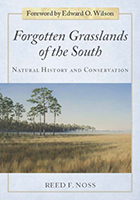
The author examines:
- the natural history of southern grasslands
- their origin and history (geologic, vegetation, and human)
- biological hotspots and endangered ecosystems
- physical determinants of grassland distribution, including ecology, soils, landform, and hydrology fire, herbivores, and ecological interactions.
The final chapter presents a general conservation strategy for southern grasslands, including prioritization, protection, restoration, and management. Also included are examples of ongoing restoration projects, along with a prognosis for the future.
In addition to offering fascinating new information about these little-studied ecosystems, Noss demonstrates how natural history is central to the practice of conservation. Natural history has been on a declining trajectory for decades, as theory and experimentation have dominated the field of ecology. Ecologists are coming to realize that these divergent approaches are in fact complementary, and that pursuing them together can bring greater knowledge and understanding of how the natural world works and how we can best conserve it.
Forgotten Grasslands of the South explores the overarching importance of ecological processes in maintaining healthy ecosystems, and is the first book of its kind to apply natural history, in a modern, comprehensive sense, to the conservation of biodiversity across a broad region. It sets a new standard for scientific literature and is essential reading not only for those who study and work to conserve the grasslands of the South but also for everyone who is fascinated by the natural world.
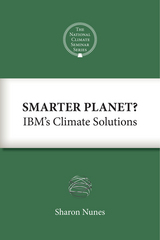
Sharon Nunes is Vice President of the Smarter Cities Strategy & Solutions program at IBM, working with municipal leaders to manage urban systems more efficiently. In her lecture, Nunes discussed the ability of smart grids and other information technology to save energy, time, and costs. Questions focused on the barriers to implementing these systems, and Nunes addressed ongoing challenges as well as successful programs.
This E-ssential is an edited version of Nunes’ talk and the subsequent question and answer session. While some material has been cut and some language modified for clarity, the intention was to retain the substance of the original discussion.
READERS
Browse our collection.
PUBLISHERS
See BiblioVault's publisher services.
STUDENT SERVICES
Files for college accessibility offices.
UChicago Accessibility Resources
home | accessibility | search | about | contact us
BiblioVault ® 2001 - 2024
The University of Chicago Press




